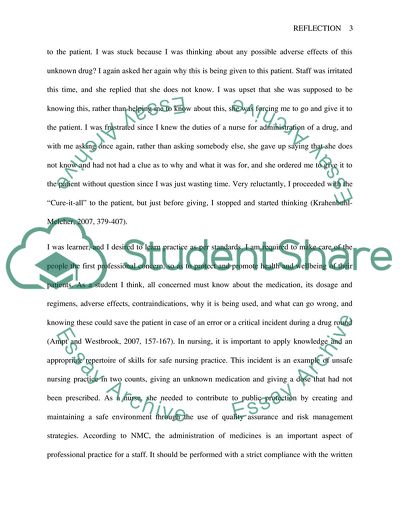Cite this document
(Using a Model of Reflection in Action Essay Example | Topics and Well Written Essays - 500 words, n.d.)
Using a Model of Reflection in Action Essay Example | Topics and Well Written Essays - 500 words. Retrieved from https://studentshare.org/nursing/1548460-write-a-reflection-using-rolfe-te-al-model-of-reflection
Using a Model of Reflection in Action Essay Example | Topics and Well Written Essays - 500 words. Retrieved from https://studentshare.org/nursing/1548460-write-a-reflection-using-rolfe-te-al-model-of-reflection
(Using a Model of Reflection in Action Essay Example | Topics and Well Written Essays - 500 Words)
Using a Model of Reflection in Action Essay Example | Topics and Well Written Essays - 500 Words. https://studentshare.org/nursing/1548460-write-a-reflection-using-rolfe-te-al-model-of-reflection.
Using a Model of Reflection in Action Essay Example | Topics and Well Written Essays - 500 Words. https://studentshare.org/nursing/1548460-write-a-reflection-using-rolfe-te-al-model-of-reflection.
“Using a Model of Reflection in Action Essay Example | Topics and Well Written Essays - 500 Words”, n.d. https://studentshare.org/nursing/1548460-write-a-reflection-using-rolfe-te-al-model-of-reflection.


